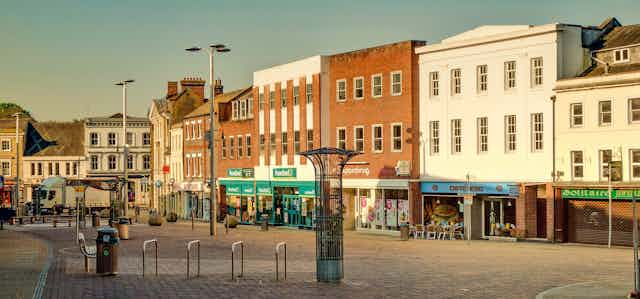Whether we like it or not, the world of retail is changing. More and more of us are using the internet to browse shops, read product reviews and search for bargains. It is hardly surprising that this is having an impact on the high street.
It is easy to blame the networked society for the death of the high street, but technology has been changing our shopping habits for decades. The advent of the refrigerator, for instance, meant that we no longer needed to shop for our food every day. This opened the door for the large supermarkets to capture our pounds and the weekly shop became the norm. Local bakers, butchers and greengrocers struggled in this new world to match the prices and convenience of these stores.
But now we have a new technological revolution, where we can satisfy our need for consumption at any time, any place, anywhere. Mobiles and tablets have become the medium of choice for many of us to browse and shop. The high street needs to reinvent itself again when many of them (and the local government regulations concerning them) have still not recovered from the previous changes.
Radical action is needed, and fast. In her 2011 report into “the future of our high streets”, retail expert Mary Portas did a great job of highlighting the issue, presenting a number of key recommendations on how to save these areas.
However, what if we simply have too many high streets? It might be the case that in this new business environment not every town, village and city can sustain a shopping district. The question is whether we should allow that to happen. What will it do to our communities? And does it even matter?
The latest intervention in this debate comes from businessman Bill Grimsey, former boss of Iceland, Wickes and Focus (DIY). Grimsey’s report, released this week, paints an uncomfortable picture for many as he states quite clearly that there is too much retail space in the UK. But why should that come as a shock to us when we all spend many hours shopping online?
The report suggests that the future high street will have fewer shops but a large and vibrant community hub where education, housing, leisure, arts and health all come together. He views the new networked technologies as an opportunity to create links between the physical high street and the online world we love to explore. His recommendations cover ways in which central and local government can innovatively support the execution of this vision with investment and tax breaks underpinned by a 20 year vision lead by the local community.
So is the Grimsey report going to save our high streets? Probably not, so long as we cling to the idea that high streets must contain mostly shops. The Grimsey report has forced us to consider a world where “high street” is more about community. Perhaps this is a good thing, to provide centres in every town where people can come together (and you can then be sure retail space will follow - it is just economics after all).
It is not entirely bad news. Some high streets are thriving. In West Yorkshire, the new Leeds Trinity Shopping Centre opened earlier this year with great success. In other towns and cities around the UK, many are learning what works for them in terms of the shape of the high street. For some, small local artisan food stores are flourishing; others are gaining a reputation for clusters of independent retail outlets.
The high street of the past may be just that, but does this mean the end of shopping? Far from it, but the way in which we shop is changing. As the pound in our pocket diminishes and our leisure time is squeezed, people want to spend their spare moments having fun. Increasingly shopping is seen as a leisure activity and is often combined with a visit to a bar, restaurant or even the cinema and many of the new successful centres are combining these activities alongside retail space. So, perhaps Grimsey is right.
One thing is for certain, the future high street will look very different and it cannot be all about retail space. There will be those centres which provide an excellent retail experience that shoppers are willing to travel some distance to. These may well be focused on the large towns and cities around the UK. But the fact that there is too much retail space in other towns cannot be ignored and must be addressed. As both Grimsey and Portas suggest, this is really for the communities to decide what is right for their area.

